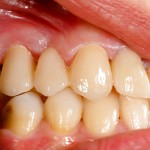
Maxillary canine teeth are the most frequently impacted teeth after third molars with a reported incidence of 0.9 – 2.2%. Females are three times more likely than males to have impacted canines. Untreated impactions can give rise to a range of complications, including displacement and loss of vitality of adjacent teeth, cyst formation, internal or external resorption of the canine, ankylosis, infection and pain. Treatment options include; interceptive removal of primary canine; surgical exposure with or without orthodontic traction; autotransplantation of permanent canine; removal and prosthetic/restorative treatment or no treatment.
The aim of this review was to assess the outcomes of transalveolar transplantation of maxillary canines
Methods
Searches were conducted in the Medline/PubMed, Cochrane Central, Web of Science, and Embase databases. Controlled trials or prospective/retrospective studies, case series with at least 10 transplanted maxillary canines investigating the indication, success/survival rate, and surgical procedure of autologous transplantation of maxillary impacted canines with a follow-up period of at least 2 years were considered.
Three reviewers screen articles for inclusion, two reviewers independently extracted data with study quality being assessed using the Methodological index for non-randomized studies (MINORS). Studies were divided into two groups: short follow-up (2–5 years) and long-term follow-up (5 years or more)
Results
- 12 studies presenting data for 783 autotransplanted maxillary canines were included.
- 1 study was considered to have a low risk of bias, 6 studies a moderate risk and 5 studies a high risk.
- Most of the studies did not report any details about clinical and radiographical pre-operative assessment.
- The surgical protocols were similar but only 6 studies provided detail about ‘extra-oral time’
- All but one study reported on fixation methods, the design, material and time period varied between the studies.
- There was a lack of detailed reporting of post-operative assessment.
|
2-5 yrs Mean (95% CI) |
5 yrs + Mean (95% CI) |
|
| Endodontic treatment | 82.5% (31- 98%) | 91.5% (53.3 – 99%) |
| Resorption | 18.5% (7.4 – 39%) | 32.2%( 5.4 – 74.9%) |
| Ankylosis | 23.8% (4.8 -65.7%) | 65.2 (0.2 – 99.9%) |
Conclusions
The authors concluded: –
There is sufficient evidence to justify the transalveolar transplantation of maxillary canines as a legitimate treatment technique for impacted maxillary canines deemed difficult to treat with surgical exposure and subsequent orthodontic alignment. Long-term studies have shown that a good overall outcome is to be expected. There is no clear agreement in the literature on the indications and contra-indications for transalveolar transplantation of maxillary canines.
Comments
A good range of databases were searched, and no language or date restrictions were applied so potentially relevant studies should have been identified. A sound methodological approach was adopted. However, only prospective and retrospective cross-sectional studies and case series were included with only one of the studies being considered to be at low risk of bias. None of the studies reported sample size calculations and most of the studies did not report any details about clinical and radiographical pre-operative assessment. The studies also lacked details of the post-operative recording. Only 4 of the 12 included studies reported on follow up of 5 years or more. There is a lack of consensus regarding accepted outcome criteria and the authors indicate a positive outcome in 87.5% (95% CI; 77.2 – 93.6%) in studies reported between 2-5 years and 88.2% (95% CI; 81.4 – 92.7%). However, half of the included studies are retrospective and of the quality most of the available studies and low so the findings should be viewed cautiously.
Links
Primary Paper
Koenraad Grisar, Dorra Chaabouni, Lesly Paola Gaitan Romero, Thomas Vandendriessche, Constantinus Politis, Reinhilde Jacobs; Autogenous transalveolar transplantation of maxillary canines: a systematic review and meta-analysis, European Journal of Orthodontics, , cjy026, https://doi.org/10.1093/ejo/cjy026
Original review protocol in PROSPERO
Other references
Dental Elf – 21st Aug 2017
Interceptive primary canine extraction for palatally displaced permanent canines
Dental Elf – 25th Aug 2017
Palatally displaced canines: open or closed surgical exposure?
